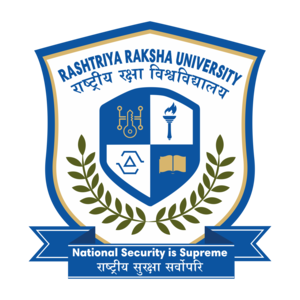
Freedom of Religion: Boon, Bane or Confusion
Freedom of Religion: Boon, Bane or Confusion
By Ashit Shrivastava*
The complex scenario around religion has always been able to capture one’s notice, it is intriguing to see that Religion precedes all civilized nations, moreover, it is the binding predicament which brought societies together, yet, and it still remains a raveling question for the civilized societies/nation to answer. As to what extent it should be kept outside the affairs of state or as to what extent an Individual should be allowed to exercise his religious right where it does not become a bane for others. The matter becomes much more adventurous when the right is exercised in India, right from ‘Ghar Wapsi’ to ‘Santhara’ to ‘Triple Talaq’. The freedom of religion has all the ingredients for the making of a Monty Python’s classic (controversial but factual)
However, it will be interesting to see that most of the religious practices are the gifts of the ancient rather than a trait of the contemporary. Immanuel Kant once said in his celestial work ‘Groundwork of Metaphysics’ that human being is endowed with ‘free will’ and it is this free will which enables an individual to choose an action over the other; but in the matter of religion, as if the dynamic changes quickly, as most of the religious practices are arrested by the dictates of the past and all that an individual is left with is an apelike trait of coping these practices. In these scenarios, it is hard to digest that one really is exercising his freedom in the true sense.
State and Freedom of Religion
Talking about religion; Secularism becomes a necessary ally, there is a great bit of literature on secularism, however the classification of secularism broadly hovers around the concept of the State erecting a wall between itself and the personal religion of the Individual and not being an impediment between the God believer and his faith, though modern jurist see Secularism more of an objective as well as a process so that religion fanatics’ can be supplanted for mutual toleration for each other religion. But freedom un-vitiated by restraint can only produce anarchy and it is quite nicely quipped by Calvinist Theodore Beza when he called religious liberty “a most diabolical dogma because it means that everyone should be left to go to hell in his own way” it is one of the reasons that freedom of religion too is not immune from the germs of restraint. Quiet truly, in India if there is no restraint on this freedom, there is more probability that it will end up clothing itself with a utilitarian character. Indian Constitution too has put a reasonable bar on the freedom by using the terminology of ‘subject to public order, morality and health’ (article 25 & 26). So unique is the relation of the State and the religion that it is hard to limit it in few words. However, the beauty of this uniqueness unfolds by a comparative study of other States; and what better way to analyze than the model on ‘Religion and State’ prepared by Prof. Tahir Mahmood who in his book ‘Laws of India on religion and religious affairs’ has broadly divided state into three models as per the relation between the State and the Religion.
In model One, he has kept those State; who have recognized a particular religion as a state religion or has given them primacy over other. For example; Bhutan and Sri Lanka, where both the countries have conferred special status on Buddhism:
Bhutan preamble of 2005 read as ‘Blessed with the luminous benedictions of the Triple Gem and the protection of our guardian deities’- Three Gems refer here as Buddha, Dharma and Sangha
· Sri Lanka’s 1997 Constitution provides that Sri Lanka shall give to Buddhism the foremost place.
· The Nepal Constitution of 1990 defined the Country as ‘Hindu Constitutional Monarchical’
· There are around 26 Countries who have declared Islam as their State religion. Some of the prominent countries of them are Iran, Pakistan, Mauritania, Afghanistan, Jordan, Iraq, Qatar, Somalia, Tunisia and others.
In Model Two, he has kept those States; who have not officially recognized any religion. For example;
· China recognizes itself as a Socialist State and therefore does not recognize any religion as State religion
· Philippines constitution provides a non-establishment clause on the religion.
In Model Three, he has kept those States; who have not officially recognized any religion as State religion, but plays a permissible role in the affairs of the religion.
· The most appropriate example of model three types of State is India; as India has a unique blend of State and religion relationship; where the State has a role to play in religious affairs of all groups (under article 25 to 30 lays down the guidelines)
· Another example is of Singapore, which does not proclaim any religion as the State religion, but provides for the establishment of the Presidential Council for Minorities for the protection of religious rights of the minorities (Article 68 to 92 of the Singapore Constitution provides for it)
CONSTITUTINAL PROVISIONS AND JUDICIAL INTERPRETATION
Under the Indian Constitution, the freedom of religion has been endowed on an Individual to practice, profess and propagate any religion or creed as per article 25 of the Indian Constitution, however, the right has to be practiced in consonance with the mandate lay down by the other articles as article 51A(e) which lays down the duty to promote harmony and the spirit of common brotherhood amongst all the people of India transcending religious, linguistic and regional or sectional diversities. Therefore, one cannot exercise his Individual right in such a way that it is an endangerment to the solidarity of Indian masses.
In most of the Judicial judgment, the judiciary has worked more as an exponent of the religious law, rather than striking them down and the decisions in most of the cases have been given in the contexts of the rights of particular religious communities or under special laws relating to such communities.
The term religion finds mention in Indian Constitution at several places, but has not been defined anywhere in the Constitution; so it was found necessary by religious denomination that there should be certain providence in which the term ‘Religion’ can be confined. The term State was first defined in the Case of SP Mittal V. U.O.I AIR 1983 SC 1, wherein the Supreme Court observed;
“In the background of the provisions of the constitution and the light shed by the judicial precedent we may say that religion is a matter of faith. It is a matter of belief and doctrine. It concerns the conscience, i.e., the spirit of man. It must be capable of expression in word and deed, such as worship or ritual.”
Similarly, in the case of AS Narayana Deeshitalyu v. State of Andhra Pradesh (1996)9 SCC 548 has discerned about right to religious freedom and the Honorable Court has observed:
“The right to religion guaranteed under article 25 or 26 is not an absolute or unfettered right; they are subject to reform on social welfare by appropriate legislation by the State. The Court, therefore, while interpreting Articles 25 and 26 strikes a careful balance between matters which are essential and integral part and those which are not and the need for the State to regulate or control in the interests of the community.”
CONTROVERSIAL RELIGIOUS PRACTICES
It has to be admitted much of the religious practices which were not in consonance to the societal morality have been tamed to a certain extent, however, few practices are still able to invoke public outcry, the most popular one has been that of the practice of Ghar Wapsi, this home grown baptism, was described by the religion denominations has an essential practice, which can be carbon dated to the Vedic period but in most cases the conversion to another religion was not an voluntary act but rather provoked by some ulterior motives. However, the principle of forced conversion was not recognized in India as already held in Rev. Stainlus Judgment.
The other Controversial practice was that of ‘Santhara’ practiced by the Jains, under which the individual has to fast unto death, the practice was declared illegal and punishable under section 306 of I.P.C by the Rajasthan High Court. However, after a public spirited litigation, The Supreme Court put a stay on the order of the High Court.
CONCLUSION
Coming to the conclusion, it is hard to limit the debate in a single article, as to see religion in desolation is conducive only of surmises. As the very concept is a Pandora’s box, and has to be seen in relation to other concepts. From an Individual point of view, the freedom of religion is an opportunity for him to choose his God and Choose the path that will lead him onto him. From the State point of view, it has to play a role of mediator, to ensure that no impediment subsist between the individual and his faith. Therefore, it is hard to concise what role or as to what mosaic perception of the religion has to be affixed.
-------
*Associate Director - Research & Publication (ProBono India)
LL.M. Student at Rajiv Gandhi National Law University, Patiala












